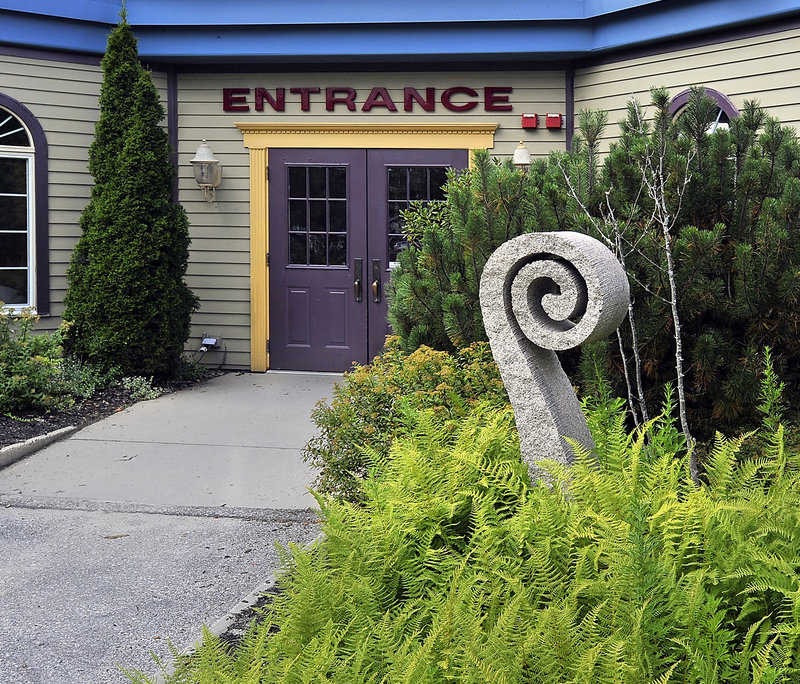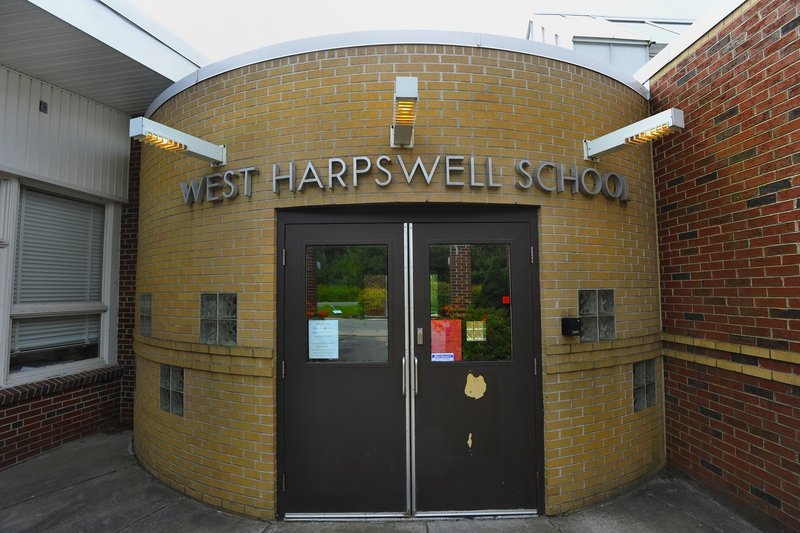BAXTER ACADEMY FOR TECHNOLOGY AND SCIENCE
Opens this fall in Portland with about 135 students total in ninth and 10th grades.
GUIDING PHILOSOPHY: The school will emphasize STEM-based education: science, technology, engineering and math, as well as hands-on project work.
SPECIAL PROJECTS: Teachers describe an interdisciplinary approach, such as studying a Shakespearean play, which would lead to an engineering analysis of catapults and the construction of a catapult. Fridays are to be set aside for students to work on projects, work in the community, do library research or use facilities at the University of Southern Maine.
FOUNDERS/BACKGROUND: The school was originally launched by John Jaques. Leadership changed in early 2013 when the board removed him and subsequently hired retired Thornton Academy head Carl Stasio as executive director. The school went through a major reorganization after Jaques left, with new donor financing, legal disputes and calls for a state investigation. Over the summer, the school weathered controversy after hosting a school choice lunch for the conservative Maine Heritage Policy Center and getting a temporary occupancy permit only a week before opening, after failing two building inspections.
GROWTH: The school plans to add a class for each of the next two years, with a goal enrollment of about 300 students in a four-year high school.
BUDGET: At about $2 million, Baxter has the largest budget — and largest enrollment — of the existing charters. Approximately $1.2 million will come from the state per-pupil allocation. The school has raised $28,000 through fundraising and has a $250,000 line of credit agreement with a local bank. Private support includes a $250,000 donation from a donor who has also given the school a $200,000 loan.
FACILITIES: Located in leased space at 54 York St., a former call center.
FIDDLEHEAD SCHOOL OF ARTS & SCIENCES
Opens this fall in Gray, with 42 students in pre-kindergarten, kindergarten, first and second grades.
GUIDING PHILOSOPHY: Guided by core values and inspired by Reggio Emilia, child-centered and place-based approach to learning. Hands-on learning and incorporating the natural world into lessons are priorities.
SPECIAL PROJECTS: Teachers plan to take students on field trips to farmers markets, greenhouses and similar locations to provide ecological learning and student-led lesson planning.
FOUNDERS/BACKGROUND: Fiddlehead began about a dozen years ago as an after-school arts and enrichment program, eventually expanding into pre-K classes. The charter school is a separate spinoff from Fiddlehead Center, but builds on the work of those programs.
GROWTH: Goal of 98 students in pre-K through fifth grade in 2017.
BUDGET: Fiddlehead has a roughly $400,000 annual budget, and expects to take in approximately $370,000 in state per-pupil allocation. The school expects to get $15,000 in fundraising.
FACILITIES: Located in leased space (leased from Fiddlehead Center) at 25 Shaker Road.
HARPSWELL COASTAL ACADEMY
Opens this fall in Harpswell with about 60 students total in sixth and ninth grades.
GUIDING PHILOSOPHY: Instruction reflects the flexible education model of Expeditionary Learning schools. The work is project-based, students are grouped by ability.
SPECIAL PROJECTS: Harpswell Coastal Academy students will be out in the field two days a week, working with teachers or local experts — a farmer, a clammer, a businessperson — on projects that apply their education to real-world situations.
FOUNDERS/BACKGROUND: A group of residents focused on forming a small charter school with emphasis on agriculture and marine sciences, rooted in the rugged nature of this part of Maine. They were connected with John D’Anieri, a local resident who helped create Portland’s Casco Bay High School as a school designer for Expeditionary Learning, who agreed to help create a new school.
GROWTH: For the next several years, the school will add students in sixth and ninth grades, with a goal enrollment of 280 students in grades 6 through 12 by the fall of 2017.
BUDGET: A one-year lease on the building was signed in June and school officials have nearly completed a $125,000 fundraising effort. The funds will supplement roughly $500,000 in state funds expected from per-pupil revenue.
FACILITIES: Located in leased space at 9 Ash Point Road, the former West Harpswell Elementary School.
CORNVILLE REGIONAL CHARTER SCHOOL
Opened in 2012, and has 60 students in kindergarten through sixth grades.
GUIDING PHILOSOPHY: The students are not separated by age, not given grades, and are instead given individualized lesson plans and evaluated on a 1 through 4 scale.
SPECIAL PROJECTS: Students throughout the school study the same subjects at the same time. After a morning meeting, they have a three-and-a-half hour block of reading, writing and math. They break for a snack and 30 minutes of outdoor physical fitness, have lunch at noon, followed by a 30-minute recess. After lunch is a 90-minute block of science and social studies, then a 45-minute period for independent study, which can include yoga, chess, crafts, origami, taekwondo or cooking.
FOUNDERS/BACKGROUND: Founder Justin Belanger credits the community of about 1,200 people and the “town fathers” for vigorously encouraging, supporting and enabling the school to open after the local elementary school closed as part of consolidation. Belanger was part of a building committee charged with finding a use for the structure, and they decided to reopen it as a charter. The town sold the school building to the charter for $1, a local business gave it a no-interest loan to launch, and the town held bake sales and auctions to keep heating the shuttered school during the charter school application process.
GROWTH: The school will add a new class in each of the next two years, to eventually serve about 120 students from kindergarten to eighth grade.
BUDGET: Cornville expects to sustain itself solely on the state’s per-pupil subsidy, estimated at about $770,000 this year, and not require outside fundraising to supplement annual budgets. There is a goal of raising $15,000 in fundraising.
FACILITIES: Housed in the former Cornville Elementary School on West Ridge Road.
MAINE ACADEMY OF NATURAL SCIENCES (MeANS)
Opened in 2012 with 46 students at the 1,800-acre site of the former Good Will-Hinckley school in Fairfield.
GUIDING PHILOSOPHY: MeANS is an environmental and agricultural school. Curriculum is geared toward farming, forestry, sustainability, alternative energy and related fields, with hands-on projects and internships.
SPECIAL PROJECTS: Both day and residential students attend school year-round, with a Tuesday through Friday schedule. All students are required to take at least one college course from neighboring Kennebec Valley Community College to graduate.
FOUNDERS/BACKGROUND: MeANS is an educational program of Good Will-Hinckley, the parent organization founded in 1889. The original Good Will-Hinckley Home for Boys & Girls closed in 2009 due to financial troubles, but reopened as a magnet school in 2011, receiving state subsidies. The charter school transitioned out of that magnet school. President Glenn Cummings launched the charter school by selling off some property to Kennebec Valley Community College and using that money to pay off debt and finance the startup of the charter school.
GROWTH: MeANS plans to add a class of roughly the same size every year to eventually enroll more than 100 students. The school is about to launch a $7 million capital campaign to raise funds to renovate the former Moody School, which was closed about 30 years ago and has been vacant ever since.
BUDGET: MeANS anticipates a state allocation of approximately $600,000, and $100,00 in foundation grants. The school received a $1 million donation from the Harold Alfond Foundation. Funds are also available through the parent company, which set aside reserves for the school on an as-needed basis.
FACILITIES: Located on several hundred acres of land in central Maine. Residential students live in dorm cottages that house up to eight students.
Send questions/comments to the editors.



